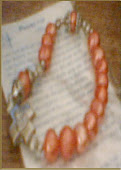iN HONOR OF THE HEALING MINISTRY OF FATHER FERNANDO SUAREZ, THE TALLEST MARIAN STRUCTURE IN THE WORLD IS SET TO RISE IN BATANGAS CITY
MANILA, Philippines - What promises to be the tallest Marian structure in the world is set to rise in Batangas City, “overlooking the horizon,” its builders claim in an architectural plan shown to the Inquirer, “like a beacon of light, a proclamation of love and faith, a steadfast companion and guide for the traveler on earth.”
If the words make it appear the structure is a lighthouse, then it may be considered as one. Standing over Montemaria, “the mountain of Mary” near the Batangas coast, the projected Marian shrine is projected to look out over the South China sea and be seen from miles around, especially by ships and vessels off shore.
The shrine is being erected in honor of “Mary, Mother of the Poor” by a foundation promoting the ministry of healing priest, Fr. Fernando Suarez.
But what would make the Marian structure the tallest of its kind in the world is not the church, but the statue atop the shrine. The statue is being made by Eduardo Castrillo, the Philippines’ most prolific builder of public monuments.
According to Castrillo, the shrine would stand 110 meters, but 92.9 meters (or 204 feet) of that would consist of the statue of Mary, Mother of the Poor. When finished, it would be taller than the statue of Liberty in New York, said the sculptor.
The height of Liberty from base to torch is only 46.5 meters or 102.3 feet. From foundation of the pedestal to torch however, it rises 92.9 meters, much like Castrillo’s projected statue.
Smaller-scale sculptures of the Apostles of Christ would grace the top of the shrine, like the statues of atop the St. Peter’s Basilica or the Tria Haec (Faith, Hope and Charity) and icons of western civilization by Francesco Monti atop the University of Santo Tomas Main Bldg.
Consumed
All of the sculptures would be built by Castrillo, but for now, the sculptor is consumed with the demands of building the Marian statue. In his two-hectare studio in Molino, Cavite, Castrillo and his workers are building the giant head and the hands of the sculpture.
“Although I have done large sculptures, I haven’t done something as big as this,” Castrillo said. “What a challenge!”
The head, feet and hands are in brass while the body, still to be made, would be be in stainless steel.
Castrillo has made cut-and-welded brass his own medium; it’s perhaps the common denominator among his monuments, and it would again be his medium of choice for the Marian sculpture, particularly in carving the expressiveness of the face.
The stainless steel is relatively more recent in Castrillo’s choice of medium. He has used it before in a San Lorenzo Ruiz sculpture commissioned in Los Angeles, US.
The metal medium is uniquely Castrillo’s. It was his ticket to fame in the early 1970’s when he started building the commissions for which he would be known—the Pietà, the Redemption and the Apostoles at the Loyola Memorial Park in Parañaque and Marikina, the Arsenio Lacson statue in Sta. Cruz, Manila, the Spirit of Pinaglabanan in San Juan, and the abstract Pillar of Growth at the Metrobank Plaza in Makati.
The metal medium would also distinguish the Batangas sculpture from Liberty.
While the New York monument is in soft concrete, Castrillo would like to carve the Madonna’s expressiveness in brass and steel.
Castrillo explained that Liberty took 10 years to make, as the French did at least two models, each one bigger than the preceding one, before the third and final version was made that now dominates New York harbor.
Castrillo said he has to sculpt the Marian statue practically from scratch. “This technique is direct, you actually work on nonexistent models,” he said.
The sculptor said he hopes to finish the Batangas statue in four years. But he’s doing it in tentative stages because of the engineering requirements. He explained he has to consider the wind velocity, the shrine itself and its foundation (designed by Nestor Mangio and Associates), and the landscape.
Montemaria is located in a marine sanctuary, Castrillo said. Wounded sharks take refuge in the corrals, and their sanctuary there improves the ecosystem.
Castrillo said he’s building the statue from the top to ease the problems of perspective. “Engineering process is one of the most difficult parts,” Castrillo explained. “It’s five times more difficult, even me, with my experience, mahirap.”
Honor
Although he has dome some 30 Marian shrines all over the world, Castrillo said he considers it an honor to carve the Mother of the Poor.
“It’s rare for an artist to be given a chance like this,” he said. “After all I have dedicated my life to making religious works like this, and I didn’t ask for a single cent. It follows my advocacy.”
His tallest Marian sculpture—and perhaps his largest work so far—is Our Lady, Mediatrix of All Nations in Donacyno Hill, Poland, the only outdoor Marian shrine in heavily Catholic Poland.
But Mother of the Poor would expectedly dwarf all of his previous monuments.
His other Marian works are common sights in Metro Manila: the Nuestra Señora de Guia at Plaza Ferguson in Ermita, Manila; Nuestra Señora de Remedios in front of the Malate church in Manila; and the Nuestra Señora de Loreto at the Loreto Church in Bustillos, Manila.
Castrillo wouldn’t mind calling his sacred sculptures “devotional.” Although he would hardly call himself a devout Catholic, the milestones of his very accomplished artistic career have always been distinguished by his sacred art works. He has done not only Marian statues, but crucifixes (especially the one in the altar of the Don Bosco Church in Makati), tabernacles, and statues of saints (San Lorenzo Ruiz in Binondo, Manila and Blessed Diego Sanvictores in Guam).
Sacred, profane
Rare among artists, Castrillo has dominated both sacred and public sacred art. Ten years ago, during the Centennial of Philippine Independence, he practically cornered all of the biggest commissions, private and public, and the results of that very productive era have been all over: the Andres Bonifacio tableaux near the Manila City Hall, the Heritage of Cebu monument, the monuments to People Power on Edsa and at the RCBC Plaza.
His artistic piety may have some poignant element to it in the light of his recent recovery from prostate cancer. The medical condition is said to have somehow slowed him down or if not, made him less visible to the media.
Celebrating his 40th year as a professional artist in 2006, Castrillo did the obligatory retrospective shows, but chose to play it calm, collected and almost muted, a departure from his usual braggadocio, a hangover of his street-smart years in Santa Ana, Manila.
But even if he’s thankful he had recovered from the medical malady, Castrillo said he has always been working.
“Just because I am not featured in the popular media doesn’t mean I’ve been idle,” he said. “Popularity is not substance.”
Indeed, Castrillo has never ceased from producing works that run the gamut from the small (his jewelry or what he calls “body sculptures”) to the grand. And by the looks of his forthcoming work in Batangas, he would never play it middling and modest.
“I have a vision that I will be doing sculptures like this, that I will see a horizon... all these works,” he said, like a man possessed.
Not that Castrillo is perennially dissatisfied, driven by personal demons that compel him to look at his monuments as wretched stalks.
“I feel satisfied in the absence of frills and honors,” Castrillo said. “I came to this world worthless, I didn’t even know what to do with my life. Then all of a sudden I became a contributor to Philippine life and culture. So I can go any time now and they’ll see me with a smile.”
SOURCE: NEWS





















0 comments:
Post a Comment